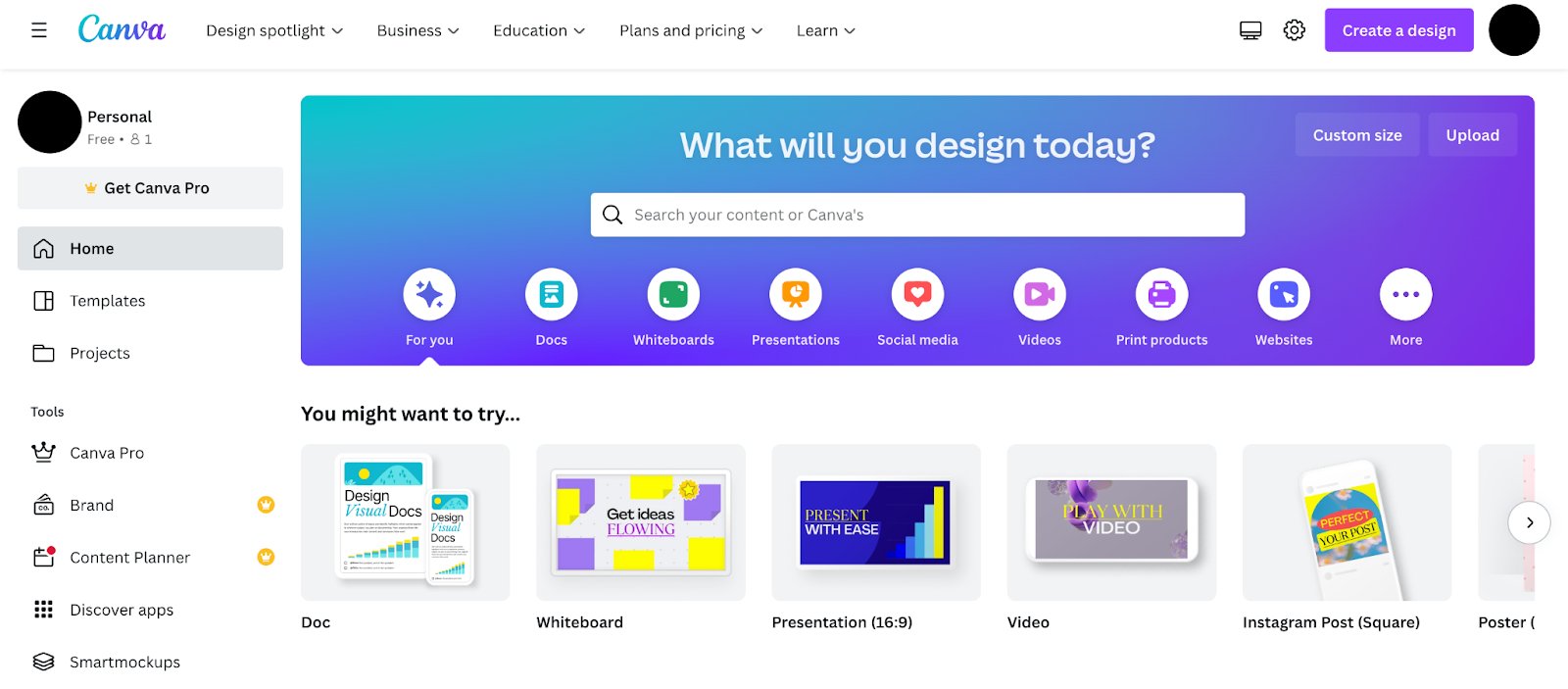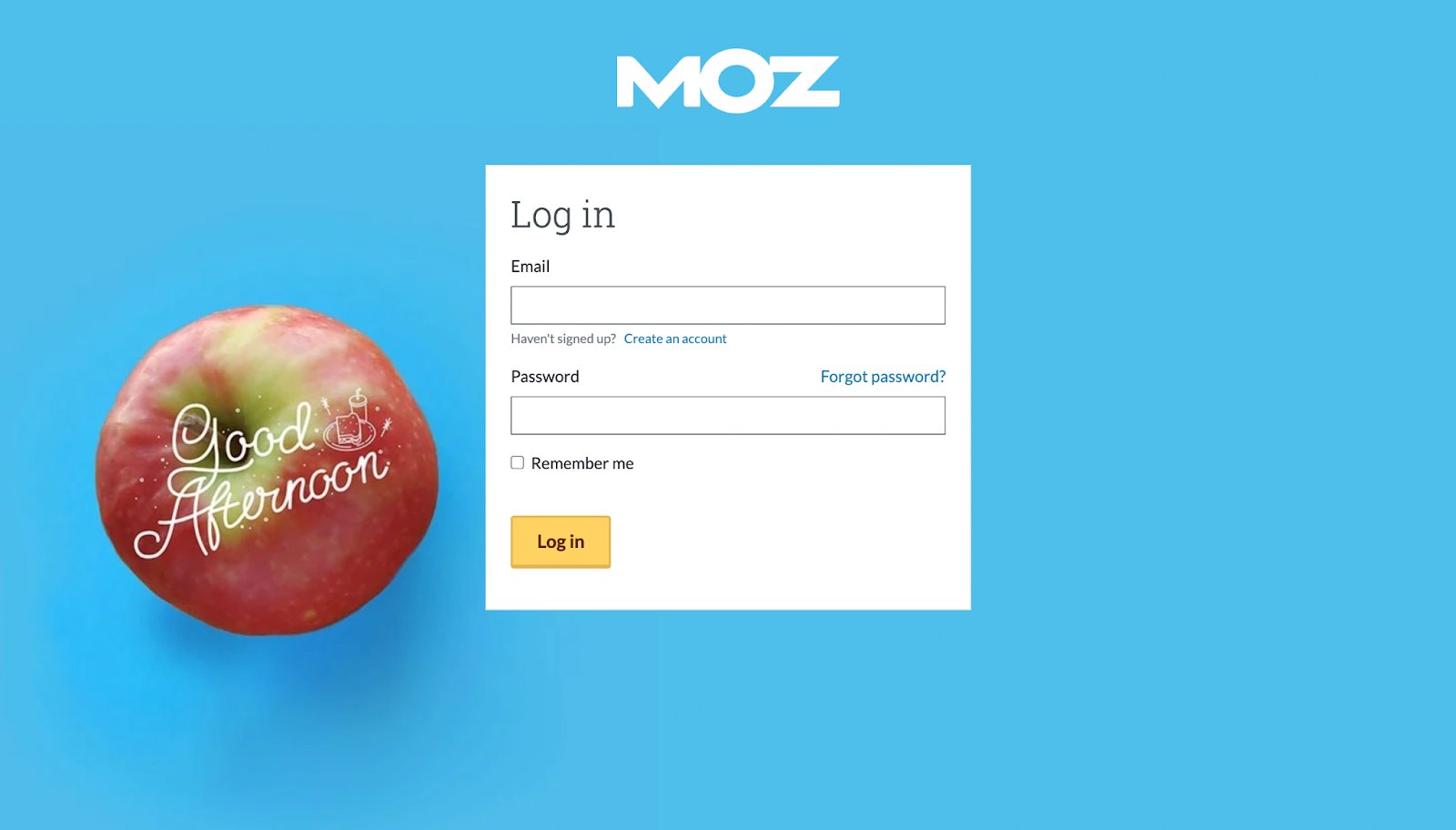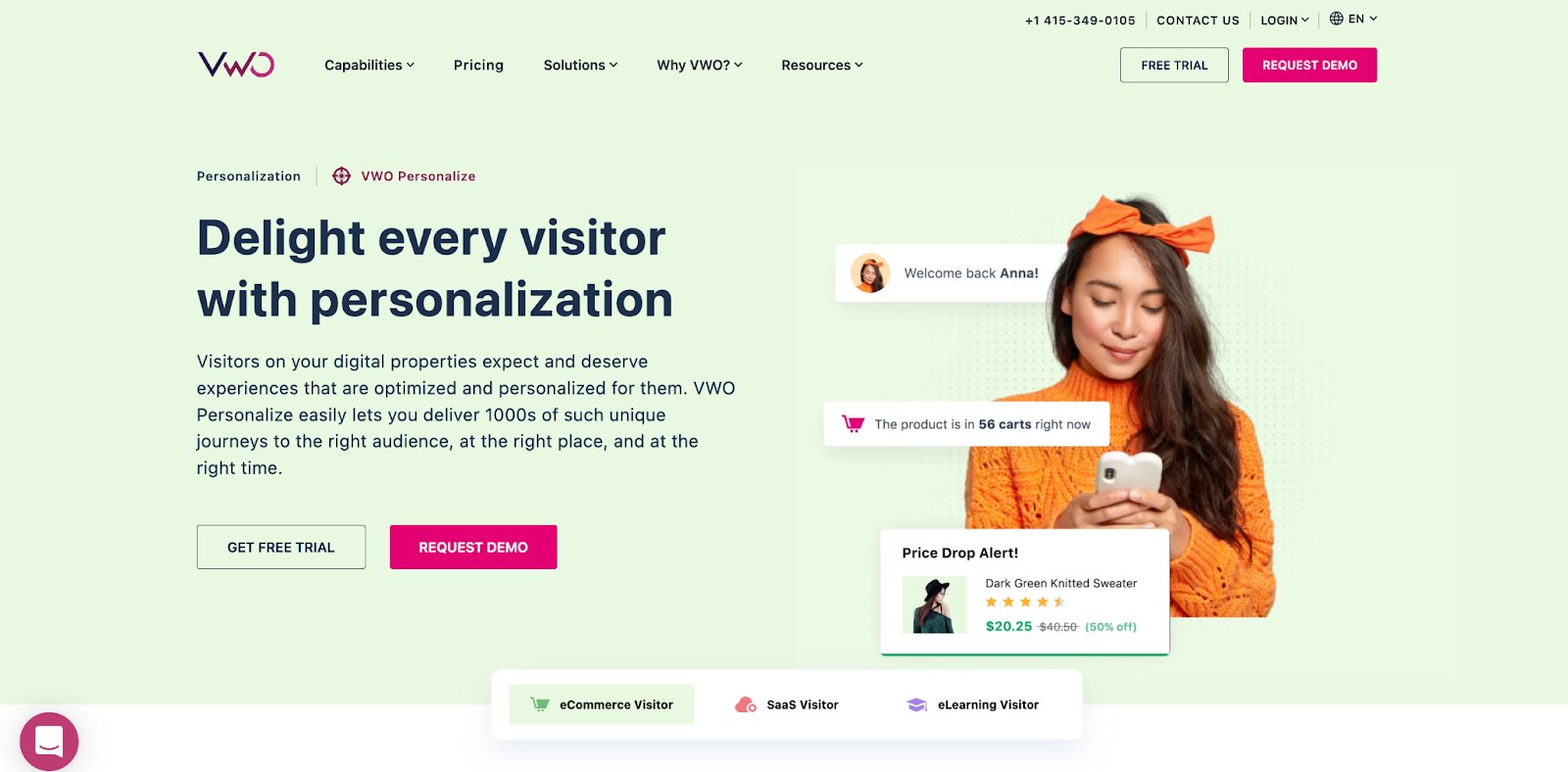What is website personalization?
Website personalization is the process of tailoring the website experience for a visitor based on past data or pre-set rules. The aim is to delight the users and make them feel special in each website interaction. Website personalization is a broad term that covers many personalization methods. Here are two main methods:
Experienced-based
In experienced-based personalization, the journey is personalized via a seamless or interruptive experience.
- Seamless experience: The visitor on the website goes through a natural transition from a non-personalized to a personalized section. One example of this is the product recommendation section on the home page of an eCommerce website, which is curated based on past searches and purchases.
- Interruptive experience: The natural flow of the visitor journey is disrupted with a personalized experience. One example is a pop-up with a personalized offer or message while surfing an eCommerce website.
Behavior-based
The method of personalizing websites based on behavior is divided into two parts: implicit and explicit.
- Implicit website personalization: This method relies on past interaction data and metadata to create a personalized and contextual user experience. The data comprises customer behavior, geography, time zone, etc.
- Explicit website personalization: Personalization is done as per the pre-set conditions by the visitor. For example, a website personalizes a product recommendation section after asking a visitor to set gender, location, age, etc. The visitor journey is personalized for a segment of users than an individual user.
Benefits of website personalization
Website personalization creates a delightful experience for website visitors. It’s an advanced step in customer service; as it involves taking care of customers’ interests and intent. Personalization also brings multiple benefits with it.
Increases CTA performance
Various studies and analyses indicate that personalizing CTAs increases the chances of a higher conversion rate.
For example, an eCommerce store showcases a CTA banner with an offer on a product that a customer recently searched for. The CTA banner has a higher possibility of conversion than traditional or generic CTAs because it is contextual and aligned to user interest and intent.
Better optimized landing pages
A landing page is like the first meeting with a new client. A website’s appearance and text matter a lot before a visitor move to know more about the product or services.
Personalized text like “Good morning/evening” based on the local time and product section curation based on current weather, festival, or any occasion creates a positive impression on the visitor. Thus, personalization brings a fresh perspective to the landing page rather than a monotonous experience for all users.
More purchases from returning customers
Imagine a regular customer of an eCommerce store who has previously bought books on multiple occasions. On a recent visit to the website, this customer is recommended fitness products. Do you think the customer will convert? Most likely, not.
Personalizing the product section increases the conversion rate, as the recommended product is more aligned with the intent of the customer. Each customer has a different intent to visit a website. For an eCommerce store, the intent of customers can be based on pricing, interests, quality, etc. Thus, creating relevant product recommendations is vital for an increase in purchases from returning customers, which is crucial for lowering customer acquisition costs (CAC).
Increases brand loyalty
Website personalization increases the purchase or visits from returning customers. The personalized experience gives returning customers a sense of care, thereby increasing brand loyalty.
Examples of website personalization
More and more companies are getting into website personalization because of its benefits. Here are two interesting examples of website personalization from notable brands.
Canva

Canva, a graphics design platform, integrates website personalization beautifully on the home page of a subscribed user. A section called ‘You might want to try’ suggests templates, which appear based on past utilized templates. It makes the entire experience relevant and smooth for the end users, as they don’t have to surf through the website to look for a frequently used template.
Moz

Moz, an SEO software company, has this simple log-in page for its user, with a personalized greeting based on time. The greeting is relevant as per the user’s time zone. Such attention to detail and personalization effort creates a positive image in the mind of the user.
It’s a very good example to understand that some of the best brands out there are not just personalizing product-related sections, but also working on each point of user experience.
Personalize your website experience with VWO
Website personalization is not new. As said earlier, many companies are getting into it, but they face challenges at each stage – from creating personalized journeys to measuring personalization success.
VWO understood the critical challenges faced in creating personalized experiences while serving 2500+ customers. It led to the creation of VWO Personalize, a platform that lets you build personalized experiences without writing code.

The ease of creating a personalization journey and measuring personalization success with intuitive reports makes VWO Personalize a leader in the website personalization industry.
So, if you are building a brand that cares for its customers and would like to personalize user experiences, VWO is for you. We offer a free trial with a quota of 10k visitors per month. Grab it today, and let us help you achieve your goals.










